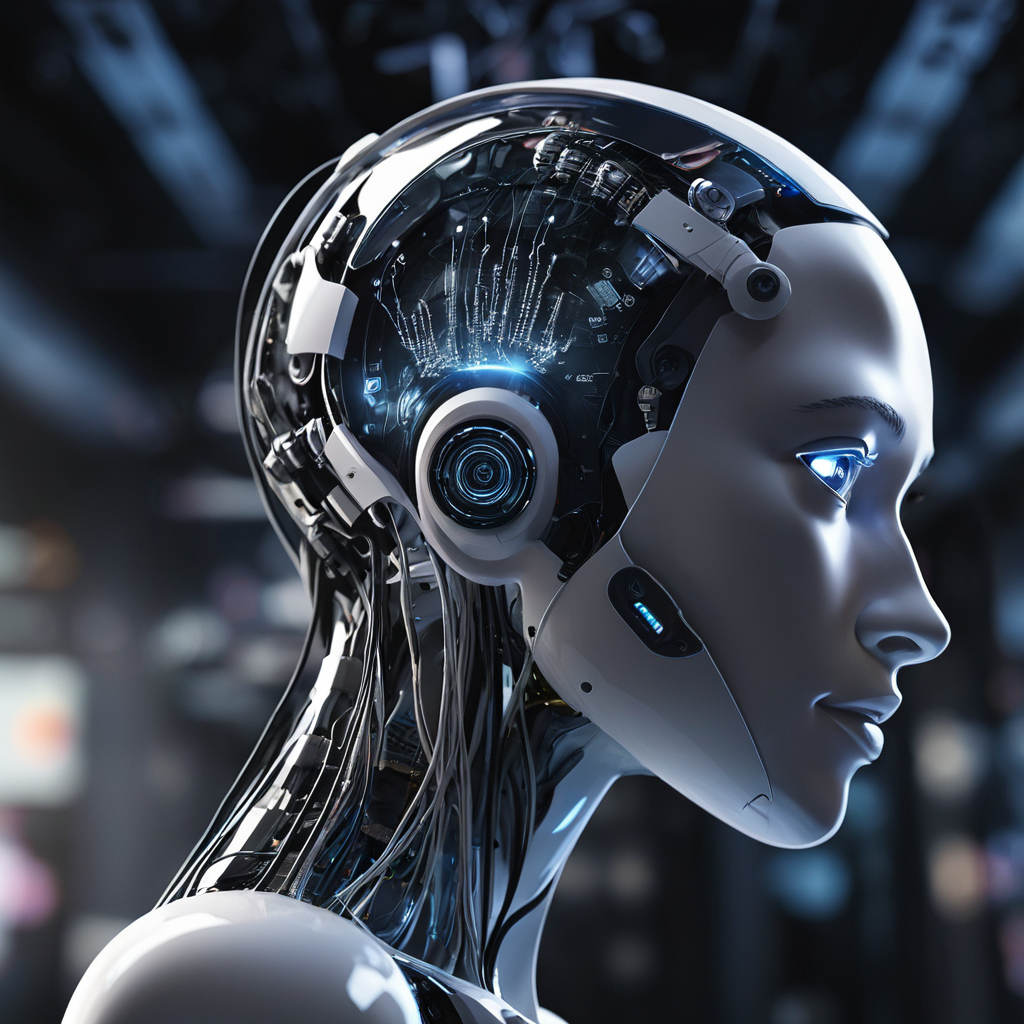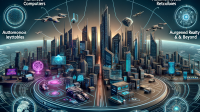Introduction
In recent years, the world has been experiencing a period of instability characterized by pandemics, inflation, geopolitical unrest, supply chain issues, blockades, etc. These challenging circumstances have also led to the perfect opportunity to alter the manner in which businesses are conducted and to reach a tipping point for adopting new technological solutions that will help businesses weather these challenging times and turn them into competitive advantages.
Thank you for reading this post, don't forget to subscribe!Zwillinge digitale
In recent years, “digital twins,” also known as digital zippers, have emerged as one of the major technological trends, especially in the industrial sector. Here, we’re talking about more than just digital replications of real-world objects, spaces, physical systems, or processes that can be used to produce more accurate products, reduce costs, or potentially predict errors. They also open up opportunities to simulate and examine, for example, the behavior of an industrial plant. Physical entities may be segmented, digitalized, and equipped with information using point-of-life networks. It makes it possible to create and optimize supply chains, automate tasks and equipment with the use of technologies like artificial intelligence, increase security, optimize quality control, and plan ahead, among other things. This technology allows components in the digital world to be changed for as long as necessary to optimize them and achieve their optimal version in the physical world. It will fundamentally alter the way that business processes are designed to be more efficient and to save costs in areas such as construction, aviation, healthcare, or education.
Blockchain Technology for Reimagining Trust
Up until now, two-party online verification processes were handled by a vermittler who verified the data through a central system, which may have resulted in a number of issues. With the introduction of blockchain technology and its decentralized model, ultimate control over an organization is eliminated, and data is encrypted and stored more securely. New avenues for transactions, communication, and business agreements are created by decentralization, along with easier automation, which is a significant boon to the digital property space. Gartner forecasts that the commercial value of this technology will increase to over 176 billion US dollars by 2025. As a result, they are expanding the use of a technology that was primarily employed in the financial sector or in relation to cryptocurrencies to a wide range of industries. In addition to generating new business ideas and speeding up transaction verification, the blockchain also guards against fraud and cyberattacks and is incredibly reliable, efficient, and safe. As a result, in the upcoming years, they will be crucial for businesses in order to protect medical data, maintain patents, create new accounting systems, improve data collection, and more.
IoT for a World that is Hyperconnected
Wir leben in einer Zeit, in der der Internet of Things (IoT) Sensoren und vernetzte Gerätenetzwerke zu einem wichtigen Bestandteil geworden sind, um digitale Zwillinge zu schaffen, das Metaversum zu schaffen, Maschinenleistung zu steigern oder die Städte der Zukunft zu gestalten. An increasing number of intelligent devices are becoming a part of our personal and professional lives. However, communication issues arose in the past due to disparate platforms or operating systems. In order to enable more effective communication, 2024 will be the year that worldwide standards and protocols are developed. In order to provide information about the process and, ultimately, improve efficiency, reduce production costs, identify new business opportunities and consumer trends, and encourage product innovation, Internet of Things technology collects and analyzes data collected by industrial machines. And we’re just getting started with what’s feasible. Forecasts suggest that by 2024, there will be about 50 million IoT devices in use. As more data is gathered and analyzed, a large network of connected devices emerges, providing the business with increased security, efficiency, and well-founded decision-making.
KI und Sicherheits
Secure data exchange between intelligent networks is expected to be one of the major trends for 2024, especially when coupled with IoT devices. For businesses, improving these devices’ security features will be a top priority, with artificial intelligence playing a crucial role. Not only does 5G offer faster communication, but it also opens up the possibility of connecting more devices. AI and machine learning give security solutions a proactive approach, enabling the quick automation of decision-making processes as well as the creation of patterns from incomplete or altered data. Real threat data is used by the algorithms to learn, resulting in faster threat detection, lower error rates, the ability to anticipate potential threats, and assistance from cybersecurity experts in creating more reliable protocols. At Plain Concepts, we’ve been working on a project using the techniques of vulnerability analysis to conduct various tests, identify attacks, evaluate the security systems of our clients, and learn from mistakes to better prepare the systems. We are also heavily involved in the implementation of solutions that contribute to the prevention of security incidents and enhance national cybersecurity in order to create a more secure and reliable cyberspace. This is because we are the implementation arm of the Spanish National Cryptological Center.
Quantensembly
In the past few months, quantum computing has become more and more popular and is expected to become a turning point in almost every aspect of life. Quantenmechanic phenomena like over- and under-representation are used in quantum computing. The application areas range from the prevention of diseases such as the coronavirus to the development of new vaccines, risk assessment, and the fight against financial sector fraud. The primary distinction lies in the fact that quantum computers are far faster than conventional computers. Because of this, major corporations like Microsoft, AWS, or Google make significant investments in this area of innovation. In 2029, the quantum computing market is expected to generate over 2.5 billion US dollars in revenue.
The Metaverse
This is an ongoing trend that keeps coming up, and it comes up frequently in conversations about the future of the technology sector. Massive economic opportunities are presented by the metaverse, which is expected to reach a value of 800 billion US dollars by the middle of this decade and rise to 2.5 billion US dollars by 2030. The original concept of the Metaverse can present businesses with great opportunities, regardless of the current challenges in implementing it through Meta, by improving their social presence, remote work, payments, health care, and the buying and selling of goods, among other things. Many businesses currently make use of this environment to enhance their products, present their brand, or build relationships with their customers. An enormous source of hope for the industry and a component of what is known as “Industrie 5.0” is the industrial metaverse. There are many different applications that range from capturing and digitizing the physical world to comprehending and segmenting data in virtual environments to achieving sustainable goals while saving money. It will take some time before we are able to experience this virtual reality and physical presence in a shared online realm, but it is certain that it will completely change the way we work, shop, and entertain ourselves. We’ve already started to notice a few of his talents.
Conclusion
In conclusion, the technological landscape of 2024 is poised for significant transformation, driven by the convergence of various disruptive innovations. The global instability witnessed in recent years has acted as a catalyst for businesses to adopt new technological solutions, paving the way for enhanced efficiency and resilience.
Digital twins, blockchain technology, IoT, artificial intelligence, quantum computing, and the metaverse are among the key trends reshaping industries across the globe. Digital twins, with their ability to replicate and optimize physical entities in the digital realm, are revolutionizing sectors such as construction, aviation, healthcare, and education. Blockchain technology is redefining trust and security, offering decentralized solutions that safeguard data integrity across diverse industries.
The proliferation of IoT devices is ushering in a hyperconnected era, enabling seamless communication and data-driven decision-making. Coupled with advancements in artificial intelligence, IoT devices are becoming more secure and intelligent, paving the way for proactive cybersecurity measures and efficient automation.
Quantum computing emerges as a game-changer, promising unparalleled processing power and transformative applications in fields ranging from healthcare to finance. Meanwhile, the metaverse presents vast economic opportunities, driving innovation in social interaction, remote work, commerce, and beyond.
As we navigate the complexities of the digital age, organizations must embrace these technological advancements to stay competitive and resilient in an ever-evolving landscape. By leveraging these innovations effectively, businesses can unlock new possibilities, drive growth, and shape a more connected and sustainable future.








